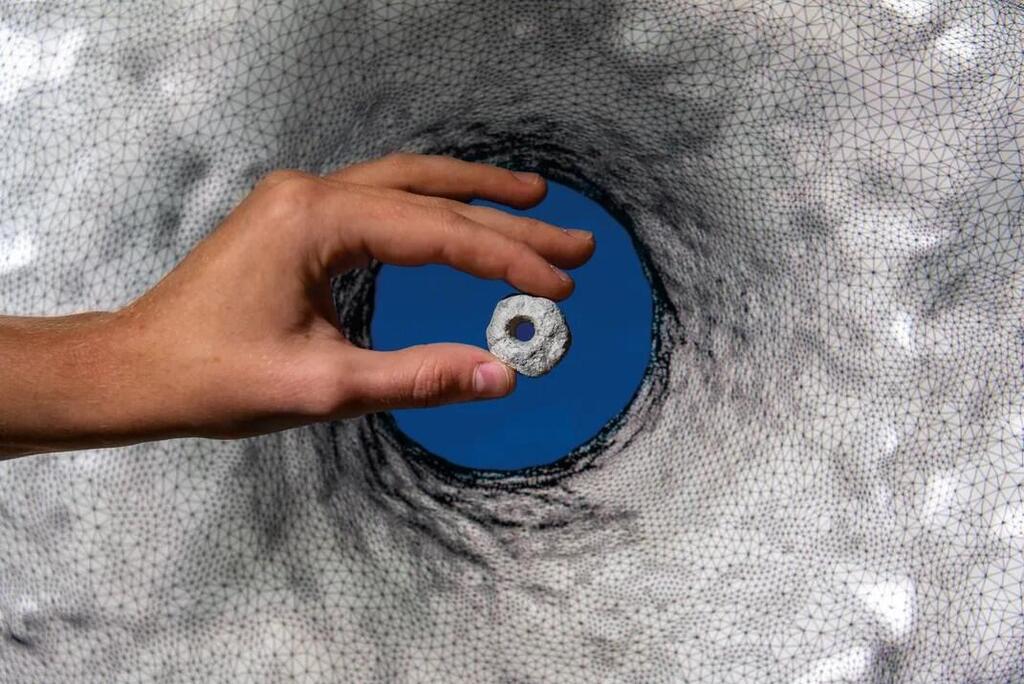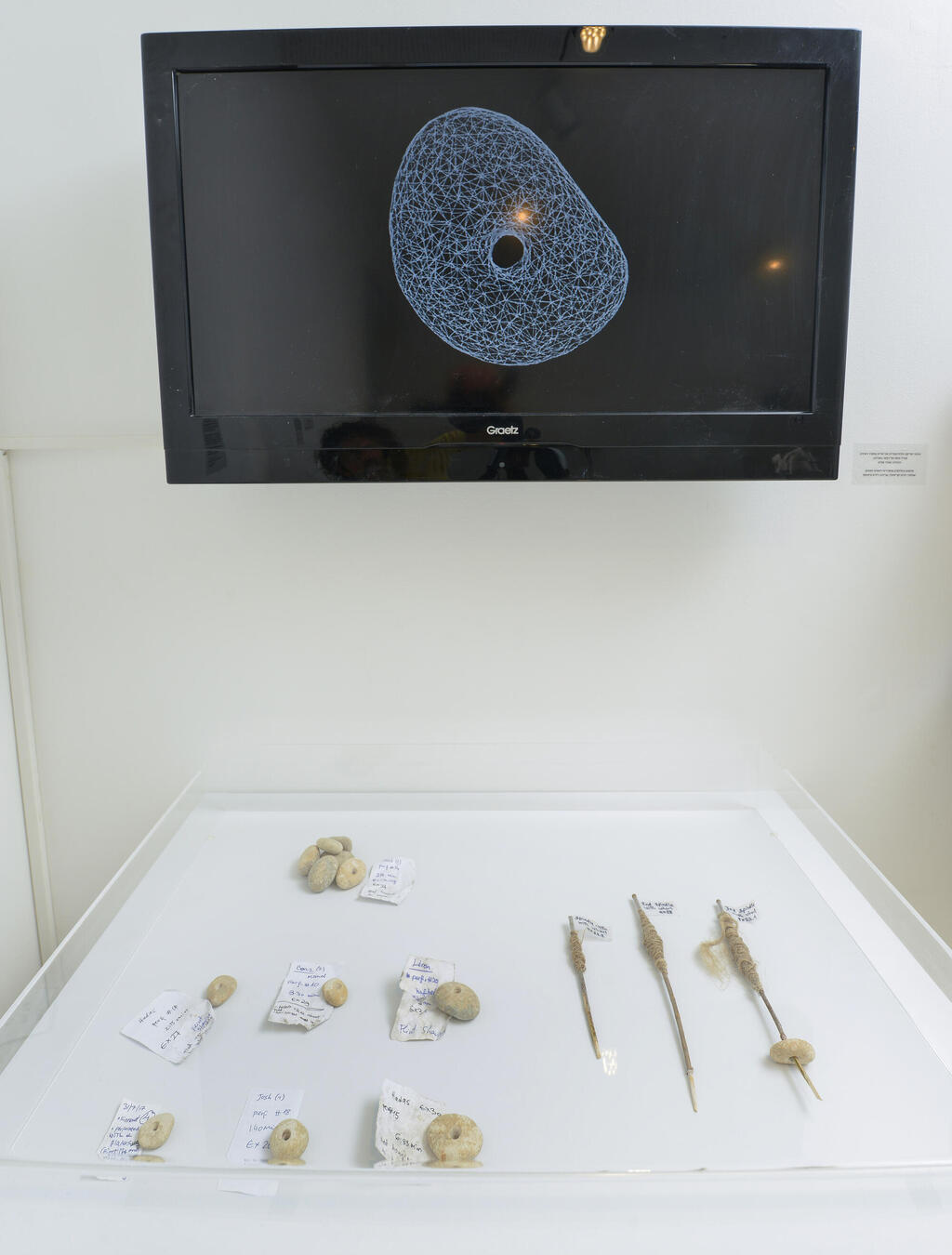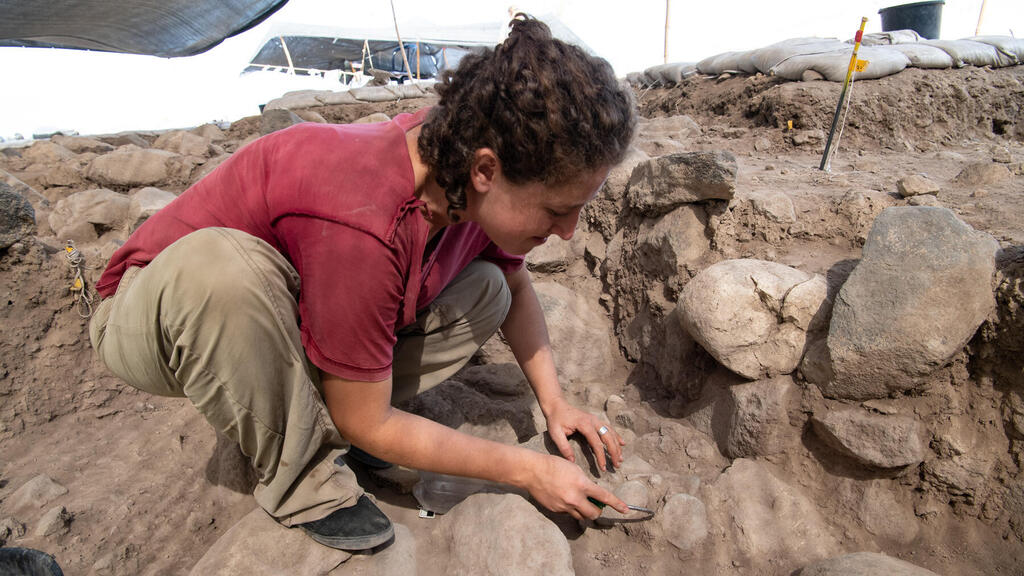Getting your Trinity Audio player ready...
Over 100 perforated stones dated to be at least 12,000 years old were discovered at the Nahal Ein Gev II archaeological site near the Sea of Galilee, likely used as tools for thread spinning. Researchers from the Hebrew University explained that the discovery marks the first evidence of the widespread use of spindle whorls from this period.
Researchers Talia Yashuv and Prof. Leore Grosman from the university’s Computational Archaeology Laboratory at the Institute of Archaeology used 3D scans and advanced computer analysis technology to study the morphological structures of the stones and found a clear match for spindle whorl usage.
Perforated stones found in Israel
(Video: Liron Naronsky, Hebrew University)
The Late Natufian site at Nahal Ein Gev II exhibits unique characteristics pointing to a settled lifestyle in the area. Evidence of intensive habitation was found within preserved structures at the site, alongside a cemetery and a variety of flint tools, artwork and installations, reflecting the transition between the Epipaleolithic and Neolithic periods.
The researchers explained that thread spinning is achieved by twisting and rotating a bundle of fibers. This can be done manually or with specialized tools like a spindle stick attached to a spindle whorl at one end. The shape and weight of the whorl stabilize and extend the spinning motion, facilitating thread creation and increasing spinning speed.
Using 3D scanning, specialized software for model analysis and practical experiments, the research team demonstrated that the stones found at Nahal Ein Gev II could serve as spindle whorls, indicating an early use of rotational technologies. The new findings show this technique originated in the Jordan Valley approximately 4,000 years before any other known textile tools in the region.
"The spindle whorls at Nahal Ein Gev II are essentially the first wheels in history: round objects with a central hole connected to a rotating axis, used long before wheels for transportation,” Prof. Grosman said.
As with many inventions, the object didn’t become widespread at the time but did several thousand years later. Once spindle whorls and their mechanical principles spread, new rotational technologies emerged including the potter’s wheel and the famous wagon wheel from the sixth millennium BCE.
The findings expand our understanding of technological innovation processes throughout history, highlighting how textile-related spinning technology, predating the wheel, contributed to its development and shed light on the dynamics of change that fueled the shift from hunting and gathering to agriculture.
Get the Ynetnews app on your smartphone:







